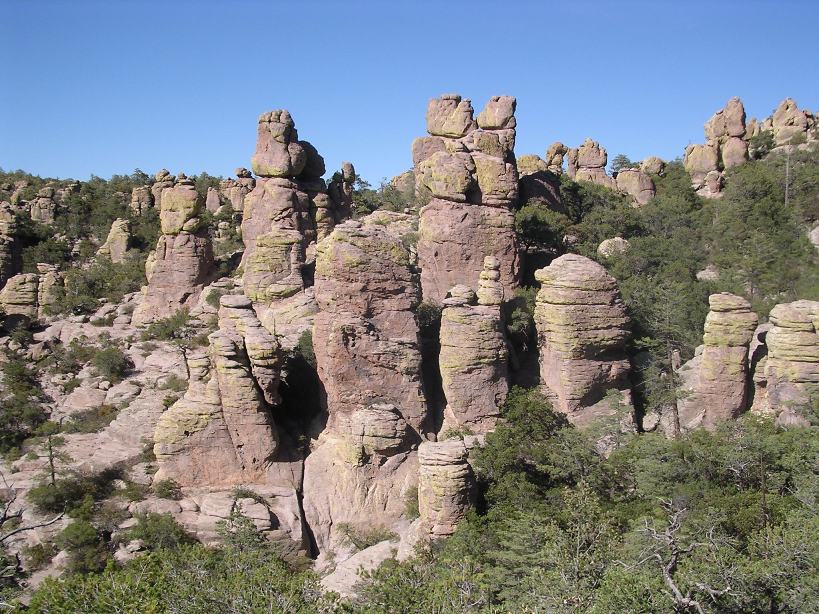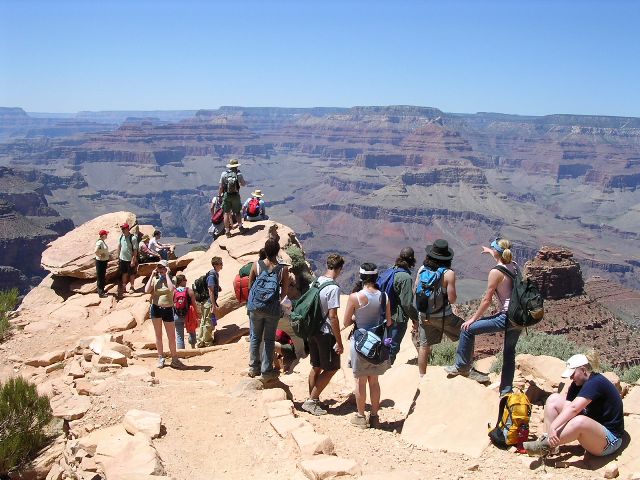In the ecology modules, you will be introduced to the natural history and ecology of the Colorado Plateau region through a series of field experiences, focusing on the conspicuous vertebrates and plants of the region. Exercises will include observations of birds, mammals and reptiles, collection and identification of fishes, botanical identification, and a series of experiments with lizards.
Biodiversity of Ecosystems

Organisms found in southwestern deserts display a wonderful array of adaptations to prevailing environmental conditions. We will explore the plant and animal diversity throughout the region by examining specific examples. Sierra Madre Occidental – Igneous geologic events, with subsequent erosion, have created a series of mountain ranges in southeast Arizona and adjacent New Mexico. These “sky islands” have biotic affinities with Mexico. Many plant and animal species associated with this environment occur nowhere else in North America. We will explore the Chiricahau (Rhyolite Canyon Trail, Rustler Park and Pinery Canyon) and Dragoon Mountains (Cochise Stronghold) in Arizona to examine some of this biodiversity. Additionally, we will explore “flatland” habitats found at lower elevations. Sonoran Desert – We will visit elements of the Sonoran Desert ecosystem around Tucson, Arizona, paying special attention to plant and animal communities. Of particular interest are the saguaro cacti that typify the Sonoran Desert.
Ecotonal Transitions

During natural surveys of the Colorado Plateau in the 1800s, C. Hart Merriam correlated distinctive plant communities with an elevation gradient throughout the region. This led to the ecological concept of “Life Zones”. We will examine the principal of “Life Zones” by following an elevational transect from near Page, Arizona (3,500 ft above sea level) to the North Rim of the Grand Canyon (8,800 ft above sea level). Additionally, we will hike a portion of the North Kiabab Trail, into the Grand Canyon, to examine plant and animal communities. Having just come from the South Rim of the Canyon, participants of this module will see how different the two sides are, while only being miles distant (as the raven flies). Note: We will be hiking at elevation, and you should be reasonably fit to complete this module. You will notice changes in species diversity and abundance related to elevation and topography. The Four Corners region offers plant and animal associations seen nowhere else in the world!
Species Interactions
Described by students as “Lizards of Moab”, this module will examine the potential for niche partitioning between four common species of lizards found on the Colorado Plateau: 1) common side-blotch lizard (Uta stansburiana), 2) ornate tree lizard (Urosaurus ornatus), 3) northern plateau lizard (Sceloporus elongatus), and 4) western whiptail (Aspidoscelis tigris). We will examine habitat use and thermal ecology of these species in Negro Bill Canyon, outside of Moab, UT. Additionally, we will examine some of Moab’s other biodiversity. We will explore riparian canyon and wetland ecosystems, as well as rocky hillsides and sagebrush scrub. These habitats afford us access to the region’s diverse plants, birds, and reptiles. Threats to local biodiversity will also be examined by looking at introduced, invasive plant species and anthropogenic activity.

